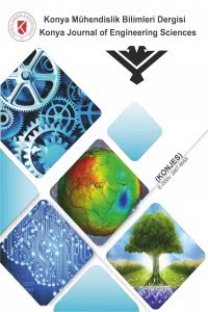Organik ve pH şok yüklemelerinin ardışık kesikli reaktörlerde (AKR) arıtım verimine etkisi
Bu çalışmada laboratuar şartlarında biri kontrol diğeri ise şok yükleme uygulanan reaktör olmak üzere birbirine paralel 2 AKR kullanılarak organik ve pH şok yüklemelerin arıtım verimine etkisi araştırılmıştır. Atıksu kaynağı olarak sentetik atıksu kullanılmıştır. Her iki reaktör de normal şartlarda (KOİ=1000 mg/1) işletilirken 1. reaktöre KOİ=5000 mg/l organik şok yüklemesi uygulanmıştır. Daha sonra aynı reaktöre ardışık organik şok yüklemeler tatbik edilmiştir. pH şok yüklemesi ise reaktör hacminin 1/10'u oranında pH= 2 ve pH=12 olan suyun ani olarak reaktöre verilmesi şeklinde gerçekleştirilmiştir. Sistem, uygulanan birinci şok yüklemeden etkilenmiş ancak 2 gün içerisinde normal işletme şartlarına geri dönmüştür. Ardışık olarak uygulanan organik şok yüklemeler sonrası ise sistemde, çamur çökelme özellikleri bozulmuş ve sistem normal haline geri dönememiştir. Uygulanan pH şok yüklemeler sistemi fazla etkilememiş ve arıtma veriminde önemli değişiklikler oluşturmamıştır.
Effects of organic and pH shock loadings on treatment performance in sequencing batch reactors (SBR)
In this research, works were carried out employing two identical laboratory-scale SBR in order to investigate the effect of organic and pH shock loadings on treatment performance. The feed wastewater used was a synthetic wastewater. Two reactors were operated to reach until steady state conditions (COD= 1000 mg/l) and first reactor was loaded with water having COD of 5000 mg/l. Then this organic shock loading was repeated. pH=2 and pH=12 shock loadings were applied to the reactor at a 1/10 ratio of reactor volume. Although/the reactor was affected by single organic shock loading but recovered itself within 2 days. On the other hand, it was seriously affected by consecutive organic shock loadings and it was not able to return steady state conditions. pH shock loadings did not affect the reactor and not much change was observed on treatment performance.
___
- American Public Health Association (APHA), 1998, Standard Methods for Examination of Water andWastewater, 17th ed., Washington, DC, U.S.A.
- Berktay, A., 1996, Effect of Hydraulic and Toxic Shock Loadings on a Rotating Biological Disc Unit;Geosound 29: 71-81.
- Gray, N.F., 1989, Biology of Wastewater Treatment, Oxford University Pres, U.S.A.,New York.
- Kargı, F., Uygur, A., 2003 (a), Nutrient Loading Rate Effects on Nutrient Removal in a Five-StepSequencing Batch Reactor; Process Biochemistry 34: 313-318.
- Kargı, F., Uygur, A., 2003 (b), Effect of Carbon Source on Biological Nutrient Removal in a SequencingBatch Reactor; Biosource Technology 89: 89-93.
- Metcalf & Eddy., 2003, Wastewater Engineering: Treatment and Reuse, Fourth Edition, McGraw-HillInternational Editions.
- Mora, F.R., Giner, G.F., And ara, A.R., Estaban, J.L., 2002, Effect of Organic Carbon Shock Loading onEndogenous Denitrification in Sequential Batch Reactor; Biosource Technology 88:215-219.
- www,alken-murray .com/ glossarybug 2.html
- www.ibec.ie/ ibec/ buspolicies/ buspoliciesdoclib 3.nsf
- ISSN: 1300-5200
- Yayın Aralığı: Yılda 4 Sayı
- Başlangıç: 2018
- Yayıncı: -
Sayıdaki Diğer Makaleler
Sakarya nehri havzası aylık akım verilerinin parametrik olmayan yöntemlerle trend analizi
Nadire ÖZEL, Serdar KALAYCI, Mehmet F. SEVİMLİ, MERAL BÜYÜKYILDIZ
Selimiye (Milas, Muğla) kuzeyinde Menderes masifi' nin mesoskopik tektonik özellikleri
Parametrik olmayan testler kullanılarak Sakarya havzası yağışlarının trend analizi
MERAL BÜYÜKYILDIZ, Ali BERKTAY
Çakırköy civarı (Gökçesu-Bolu) bitümlü kayaçlarının organik jeokimyasal incelemesi
ALİ SARI, Saday Azadoğlu ALİYEV, DERYA KOCA
TEVFİK AĞAÇAYAK, Veysel ZEDEF, Salih AYDOĞAN
Organik ve pH şok yüklemelerinin ardışık kesikli reaktörlerde (AKR) arıtım verimine etkisi
